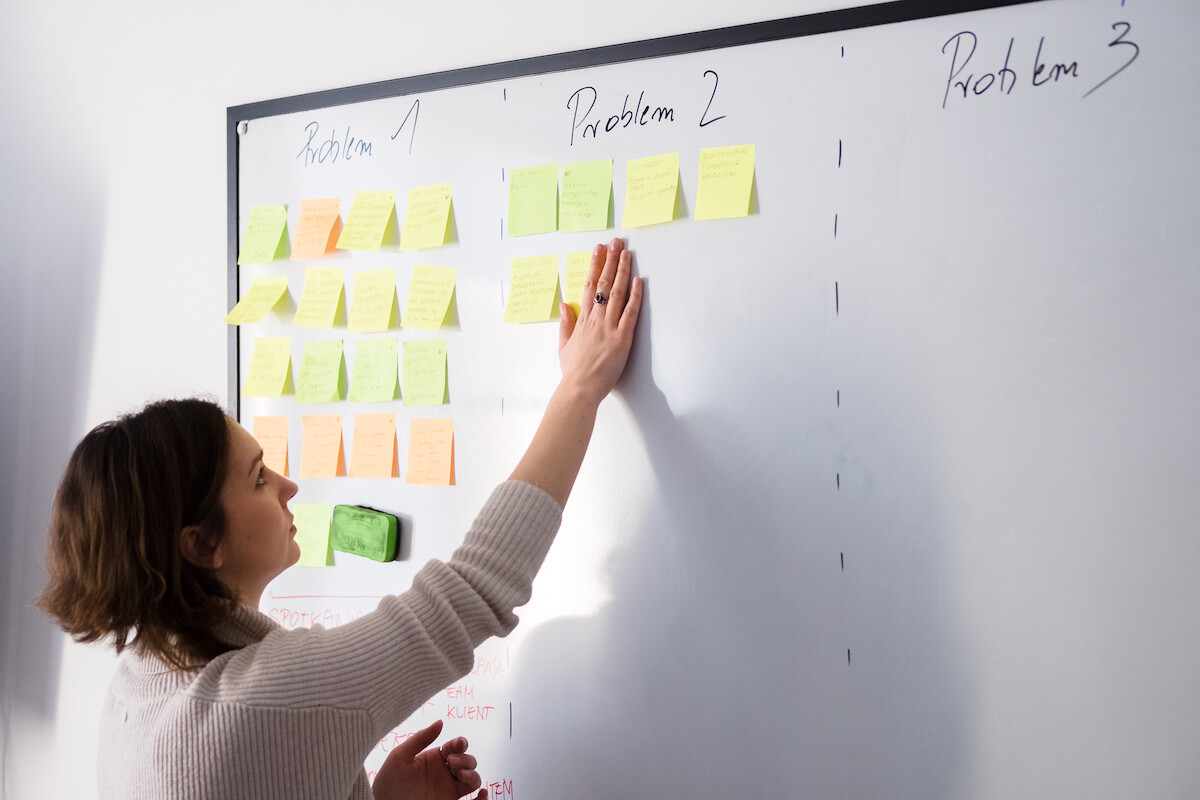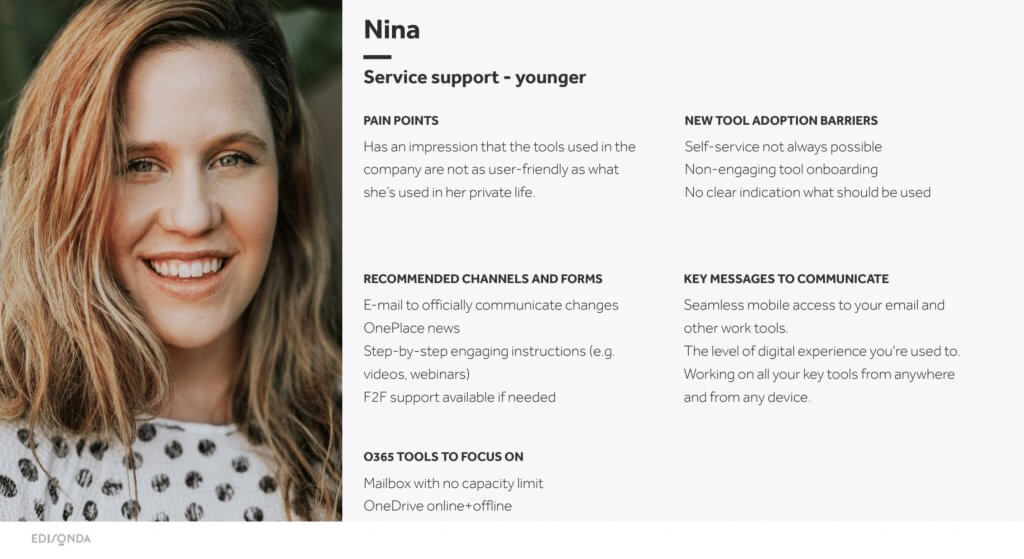This article will show you:
- why a customer experience (CX) strategy is an important element of the company’s success;
- what tools to use to UX design and test an effective customer experience strategy;
- the four key elements of an effective CX strategy;
- why it is also worth considering the employee experience, for their consistent experience within an organisation;
- why it is worth analysing the customer experience in the whole sales process;
- how to retain customers in crisis situations.
Customer experience CX – what is it?
The definition could be basically closed in one sentence. Customer Experience is the overall experience of users in contact with a brand, service, company… What are “experiences”? These are feelings, impressions, opinions. What does it mean “in contact”? This is a deeper topic. For digital solutions – it will be using an interface to satisfy some need, e.g. buying a service or product, registering via a form for an event, downloading an e-book or finding information. So how does Customer Experience differ from User Experience? Here, it is necessary to look at a given system, application or service much more broadly – beyond the borders of the interface.
“Customer first” – customer experience is the key
Those more daring, the early adopters, like to test out technological innovations. They try on new clothes and furnish their houses with VR environments, navigate through the shops using beacons, and try to convince small neighbourhood shops that Apple Pay will be a perfect addition to their business.
However, most customers tremble at the mere thought that the delivery man will leave their long-awaited package in some shop far, far away, and that the package will be damaged, forcing them to spend hours on a busy customer service callcenter, listening for the umpteenth time to a “soothing melody” intended to make the wait some kind of pleasure. The worst-case scenario? Being forced to hold a pointless conversation with a thick-witted chatbot or encountering no reaction in relation to the dire straits they have found themselves in.
Obviously it is impossible to avoid some situations like this. Whether or not we retain the customer after such a slip-up, however, largely depends on whether we have committed ourselves to developing an effective customer experience strategy.
Today’s consumers are constantly exposed to stress. They function in a dynamically developing world, receive innumerable stimuli, are constantly forced to make decisions and deal with ever more automated forms of customer service.
A customer survey carried out by PwC on the significance of designing the customer experience in the e-commerce sector has shown that:
- 32% are ready to abandon their favourite brands after just one bad experience;
- 43% are ready to pay more for guaranteed convenient customer service and products precisely tailored to their specific needs;
- 65% think that positive experiences have a greater impact on their decisions than well-prepared advertising campaigns.

The best also make mistakes
Even the most experienced business players can launch products that the target customer groups fail to appreciate. Not many cared for a Pepsi Blue (even though it was advertised by Britney Spears), Rupert Murdoch’s iPad-only newspaper, Cheetos lip balm or Google Nexus, which was supposed to mirror a n Android device onto a TV set, or, finally, beef-flavoured water for pets.
There is increasing awareness related to how significant it is to comprehensively design the customer experience. This often does not translate into practical actions, as we can see from the figures – with over 40% of businesses declaring that they do not verify their products and services through user experience studies. This is all the more surprising, given that the number of easily accessible audit support tools has grown in recent years. It is now also considerably easier to access comprehensive data, allowing us to follow the whole sales process and identify its weak points.
Check out what the competition are up to
Before you bring in a professional agency to carry out a competitor analysis, you can first examine what your competition are doing. Here Google can come to your rescue. If you do not know what keywords to type in, you can use the keyword planner in Google Adwords. Enter the address of your website and it will generate relevant words for you and show you which are searched most often. If you want a more detailed analysis, try out SimilarWeb. This is a more comprehensive tool for identifying and monitoring your competitors.
Check out their value proposition, how many times their products have been downloaded, and what opinions customers share about them on the Internet. Analyse their strengths and weaknesses, and locate a space for you to introduce your innovations.
Sometimes customers reject well-thought-out products that were quite warmly accepted at first. This happened to Nike’s fitness tracker, Kinect, and Birchbox, a subscription-based service with monthly deliveries of cosmetic samples. Birchbox is now heavily in debt, even though it was launched in 2010 with a funding of USD 80M and a 1 million customer base. Ipsy, a company based on the same sales model, took its place, but with a much more coherent and well-thought-out value proposition and sales strategy.
A report (2019) by KPMG on managing customer experiences on the Polish market (a study carried out by an external agency with a sample of over 5,000 respondents) has shown businesses from the Top 100 Brands list achieved 4% higher revenues than the average for companies in the same industries . Ziaja (Polish producer of pharmaceuticals and cosmetics) leads the list, with the best marks given by customers in four categories – reliability, empathy, time and effort. Nike, Hilton, Adidas, Allegro and Netflix came trailing just behind.
Smaller companies usually have a much smaller budget to carry out various studies, unlike the industry giants. But even the tiniest of changes can make customers change their attitudes towards your products.
In the digital environment, it is often the customer’s first impression of your website interface that decides whether they stay or leave immediately. Promotional pop-ups, deceitful attempts to obtain the customer’s e-mail address, ineffective filters and incomprehensible language are the digital equivalents of the pushy salesman who loudly brags about his goods. The salesman, however, has no idea about our needs and preferences, unlike algorithms.
Passing smoothly through each step of the purchase process, and reducing the cognitive and communication “jumps” in switching from a tablet to a phone, or from a personal computer to communicating with a consultant, is one of the most fundamental expectations customers have today. At the same time, 54% of respondents (in the USA) declare that the experiences offered by most companies do not satisfy them and should be improved.
A timeless trend – the cult of high speed
According to the report by PwC, 88% of customers declare they are ready to pay additional money for their purchases to be delivered on the same day or even significantly faster. As part of its Prime Now service, Amazon can now make deliveries within 2 hours, while Alibaba, the Chinese potentate, needs only 30 minutes to deliver goods to a specified address, provided it is within 3 kilometres of the given store.
A well-tailored customer experience strategy allows you to control the whole purchase process and ensure that the customer feels heard, noticed, and valued by you. This translates into visible effects – better sales results, lasting consumer-brand relationships and more effective reactions in crisis situations.
Where should you start working on your customer experience strategy?
The starting point for designing a customer experience strategy should be to determine the long-term business objectives and to identify the resources to ensure that the objectives are met (both over the next year, and the following three to five years).

In order to get an all-encompassing picture of how a company functions, how it is perceived, and to understand the needs present in the sales process, it is also necessary to consider the respective stakeholders – employees, customers and shareholders. Accounting for the needs of employees is vital, because for a CX strategy to be successful, all employees must be committed and understand the company’s strategic objectives.
Key elements of an effective CX strategy
- Business strategy. A general vision of the company – how to ensure and organise long-term growth and sustainable operations.
- Value innovation. Newness combined with price and usefulness.
- User studies. How to distinguish customer segments and determine the best methods for building relationships with them.
- Functional design. One that covers all touchpoints, both in the digital and real worlds.
Employee experience. Do not trivialise the need for employees to feel comfortable
Studies conducted on users are not enough to design an effective customer experience strategy. Building relationships with customers largely depends on properly training your employees, and ensuring they feel comfortable at work and are satisfied with it, which is why more companies are starting to include the employee experience as part of their customer experience strategy. This involves providing a set of coherent experiences for employees working in a given organisation.

In these times of advanced automation and digitisation, broader technological competences and greater interpersonal skills are all expected from CX specialists. To make them feel comfortable and allow them to commit to building company culture, it is also necessary to satisfy their needs. The right communication and management patterns, along with development opportunities, make a positive impact on the employees’ motivation, which is reflected in their relationships with customers.
Where does the knowledge come from?
Look at the value chain associated with your product. Qualitative and quantitative studies, as well as data gathered by your organisation, can all help you here. A well designed customer experience strategy should be scalable, which means it should prove useful both when the demand for your product is low and when the customers start flocking to your business.
UX Research methods used in designing CX strategies
- Gathering information within the company. The customer service department may hold information on the most frequent causes of complaints, whereas those responsible for data analysis may have access to user flow reports. It is also worth taking into account the ideas and opinions of your employees.
- Quantitative studies. These are often the starting point for identifying problem areas. For example, a user flow report generated with Google Analytics can let you see that some customers abandoned the purchase process even though they had already placed some items in their cart. Such a report can help you identify the weaknesses in your process. Tools: Google Analytics, Hotjar.
- Focus group research. A group discussion with respondents selected in line with certain specific criteria – e.g. former buyers of your products who turned to competitor brands.
- In-depth interviews. With this information about your problem areas, you can begin to prepare precise interviews with users to give you greater insight into their needs and observations. Tools: live interviews, Internet surveys.
We design for the largest brands
The knowledge gained through direct contact with customers is processed by tools that allow you to visualise the whole spectrum of experiences, from the moment the customer encounters your brand for the first time to the moment they end their relationship with your product. What should interest you most are the customers’ emotions related to the sales process (including those felt when reading the opinions of others) and to the company’s marketing activities, together with their prior experiences, attitudes towards the products (their own feelings, and their discussions about them with friends) and opinions on customer service.
Among the more popular research tools that can help you in organising the collected data are customer journey maps, personal and job stories. You can also design your own tools through workshops with your customers and employees. Your overriding objective should be to understand in great depth the decision-making processes in which the customers engage, discover the reasons underlying them and map the whole range of experiences which arise from their contact with your brand.
Customers experience – tools to help visualise the knowledge obtained from stakeholders
- Customer journey map. Usually presented as a timeline, the customer journey map is a visualisation of all the interactions and touchpoints with a product or service.
- Personas. User archetypes based on the knowledge you gain through studies with stakeholders. The personas involve descriptions of the users’ aims, characteristics, needs and preferences (Illustration No. 1).
- Job stories. These help you to put yourself in the user’s place, understand their needs and analyse their motivations. The stories take the form of compound sentences and include the situation (when), the motivation (want), the objective (in order to) and the suggested solution (I can). For example: When I wish to use the configurator and want to learn what sort of data are necessary in order to begin the configuration, I can read the relevant information on the configurator’s welcome screen or in the booklet.

How should your customer experience strategy be designed and developed?
It is worth remembering that working on the CX strategy is a process. If you treat it any differently, you risk not being able to react to the ever-changing market requirements, trends that turn everything on its head, and the latest technological developments. It is necessary to designate people to take care of this process, involving all stakeholders in the development and implementation of the strategy.
Even the most comprehensive business strategies, suggestions for value innovations and studies on user needs require regular reviews, to verify whether the short-term objectives are being implemented successfully and whether foundations are being laid to implement the long-term objectives.
How should long-term coherence be ensured for your CX strategy?
Within your organisation:
- Designate a person responsible for monitoring the implementation of the customer experience strategy.
- Plan appropriate training for employees on the value proposition within your customer experience strategy.
- Take into account the innovative potential of your customer experience strategy. Be open to the employees’ ideas and remarks.
- Determine the short-term and long-term effects that the costumer experience strategy will have on your organisation.
Within your products or services:
- Check whether the solutions suggested in your strategy are scalable and whether they will work when you have more customers.
- Remember that your CX strategy must bring a new quality to your service.
- Integrate the respective touchpoints – communication, marketing, sales and customer services.
- Ensure that all processes are smooth.
- Create an original idea for building customer relationships with your brand and make gaining their loyalty your priority.
Suggested reading:
- J. Levy, UX Strategy: How to Devise Innovative Digital Products That People Want
- J. Kalbach, Mapping Experiences. A Complete Guide to Creating Value Through Journeys, Blueprints and Diagrams
- A. Osterwalder, Y. Pigneur, Business Model Generation: A Handbook for Visionaries, Game Changers and Challengers


